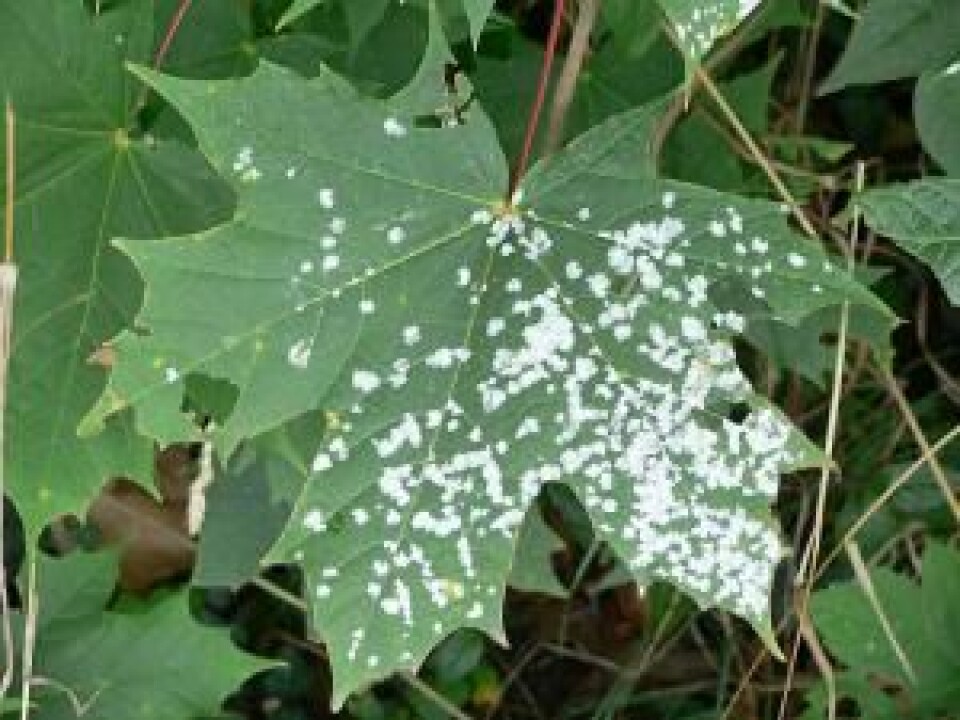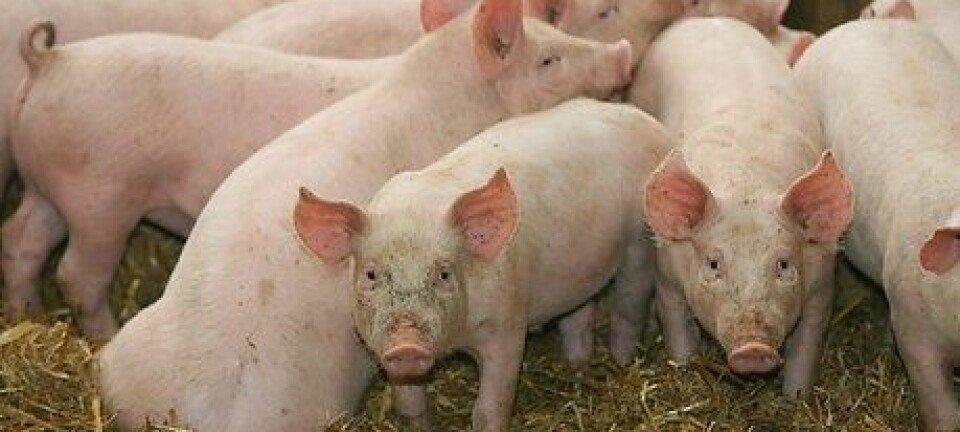
A new GMO technique that organic farmers will love
Genetic engineering of plants can restore characteristics lost through traditional breeding.
Organic farming and genetic engineering may sound completely incompatible, but new techniques are trying to make genetic engineering more attractive for organic farmers, writes a team of researchers from the University of Copenhagen in an article published in the journal Trends in Plant Science.
So-called precision processing, uses a technology known as CRISPR/Cas9. It allows you to modify specific genes in a plant.
This can give the plants the characteristics you want with much greater accuracy than traditional breeding techniques, where mutations occur randomly.
The research group believes that the high precision of these modern genetic technologies fits well with organic values. The research group is truly multidisciplinary, composed of biologists, ethicists, philosophers, economists, and lawyers.
"We may believe that environmentalists are the last group of people who would use genetic engineering. But philosophers have given us an insight into their values. The basic principle being, you should not do things if you cannot foresee their consequences. So according to philosophers, precision processing fits with their values," says Michael Broberg Palmgren, professor of plant physiology at the Department of Plant and Environmental Sciences at the University of Copenhagen.
Traditional breeding has made plants vulnerable

The research group's starting point was to find sustainable ways to grow enough food in the future with a harsher climate and many more mouths to feed. They began to look at wild growing hardy plants to see if they could learn something from them.
"And then came this idea that our plant culture has become weak, because we have changed them over a very long time on the basis of selecting certain properties. In the process they have lost other properties that we did not select for," says Palmgren.
He compares it to dog breeding, which after thousands of years has resulted in many different breeds.
"We wanted pets that we can applaud, and that are faithful. In this way, we have changed a wolf into a poodle. But the poodle will no longer be able to survive in the wild if placed there again," says Palmgren.
We can give plants their wild properties again
When genes undergo a repair process, a small corner of the DNA strand can occasionally be lost or a small knot added. This changes the DNA by what is commonly referred to as a mutation. This same process can either change or completely destroy genes.
Scientists can now use a technique called CRISPR/Cas9. They create enzymes that stick to a specific location in a cell's DNA, causing the DNA stand to be cut off at this point. Then repair enzymes flock to this same spot, collect the DNA strand and create a new genetic mutation.
Unlike what happens in nature, the artificial mutation does not happen at a random location in the DNA. The mutation occurs in the gene, which the researchers specifically target with the enzyme. When it is all over, scientists can then see what mutation has occurred, and what the new properties may be.
In nature, most mutations can be detrimental, because the organism is already so optimised for the environment. However, if the cut occurs where a gene is already damaged, there is a possibility that a new mutation will be able to restore the lost DNA.
Researchers are therefore interested in restoring some of the original genes and characteristics of the wild plants – a principle called 'back-to-nature processing' or 'rewilding'.
The dog breeding example works well here. A poodle could be rewilded by traditional techniques, by crossing it with a wolf. Allowing the poodle-wolf to mate with a poodle again, and again, until you got a back to a poodle, would then result in a genetically robust poodle.
Genetic engineering would achieve the same result as traditional breeding methods -- just more accurately, says Palmgren.
Genetic Engineering prevents random mutations
The CRISPR/Cas9 technique is so precise that scientists can target a single gene to mutate and thus either destroy a specific gene or repair a broken one.
There is no risk of making many unintended mutations of other genes in the plant, as is the case with conventional breeding methods, says Palmgren.
"You have to compare it to, for example, a cucumber which tastes bitter, and you want to remove that bitter property. The traditional method takes the seeds from the cucumber and irradiates them strongly or treats them with harsh chemicals. Perhaps 10,000 plants will germinate. You taste all the fruit and find some that are not too bitter. But you have no idea what has happened and you do not know whether there have been 500 other mutations in the plant," he says.
GM wheat became resistant to fungus
Chinese scientists successfully used CRISPR/Cas9 to make wheat resistant to the fungal infection mildew. They destroyed the genes that made the plant susceptible to the fungus, according to an article in the journal Nature Biotechnology from 2014.
"These wheat plants have not been rewilded, rather stripped of a property. But it has happened in a more precise way than is achievable with other techniques. This should make environmentalists around the world very happy. They have inherited resistance to mildew, without introducing new DNA, and no longer need to be protected against it, which in conventional agriculture would require chemicals. They could have arisen naturally, and you cannot distinguish them from a plant that had arisen in nature," says Palmgren.
Scientists believe that the more robust plants created with the new genetic engineering technology can help to reduce the gap in yields between conventional and organic agriculture, because they perform better without pesticides.
"The first plants that are made using the processing precision will have the undesirable characteristics removed, just like the Chinese wheat plants. Then the next plants to be bred will have the old properties restored, which had been destroyed by traditional techniques. Organic farmers should approve of the technique," says Palmgren.
Organic Farmers rule out genetic engineering
The Danish Organic Farmers Association flatly rules out the possibility of genetic engineering.
"We do not need it because there are other methods. We do not want it, because we have other principles. And we cannot sell it, because our customers do not want it," says the association’s director, Paul Holm Beck.
He believes that researchers have made a creative interpretation of the precautionary principles of environmentalists, but it is far removed from what environmentalists actually think.
"When faced with a technology where there is virtually a total lack of independent research on health and natural effects, there are grounds to show caution. The situation with the genetic engineering of old properties of plants is not different than any other genetic engineering," says Beck.
He does not believe that there will be a scientific basis to say that genetic engineering is safe, and he believes that the research group makes it all sound more simple than it is.
"I simply think it lacks an intellectual humility of how little we really know. Each year we gain new knowledge of plant genes and cells through research into epigenetics, and these researchers are still talking about it as if they were LEGO bricks. The factors that determine whether properties are expressed or not is much more complex than that," says Beck.
Ethical dilemmas puts end to GMO
The rejection by the organic farmers comes as no surprise to Mickey Gjerris, associate professor of bioethics at the University of Copenhagen. He was not involved in the new research.
"There will be some for whom there is a moral difference between tried and tested methods, which are an extension of what is going on in nature but could be considered to be unnatural because they could not actually take place in nature," says Gjerris.
"There are also some environmentalists who would argue that it is ethically wrong because it includes some unknown risks, and because it is basically a continuation of an attempt to change nature to suit us instead of us changing to fit around nature,” he says.
Old methods of breeding are also ethically dubious
Gjerris thinks that the new proposed type of genetic engineering is in many ways at least as ethical as some of the conventional breeding methods.
"When you irradiate plants and pour chemicals over them to see if you can get interesting mutations out of it, then it is hard to spot a fundamental difference between that and the new ways of engineering plants. Especially when we talk about this use of biotechnology, which move genes between closely related species or in fact switches genes within a species," says Gjerris.
Gjerris thinks that organic farmers will one day use some genetic technologies, but it will be many years before it happens.
"You should also just calm your expectations. Science has been oversold before. For 40 years people have said that genetic engineering would solve all our problems, and that it was much more accurate than other processing techniques, but it basically hasn’t solved any problems yet," says Gjerris.
Colleague: "A little bit naive"
According to Rikke Bagger Jørgensen, a senior researcher at the Department of Chemical Engineering at the Technical University of Denmark, the technology is being oversold. She herself has worked with plant production for many years.
"It will be sold as a major breakthrough for organic farming -- that you can now close the yield gap from conventional to organic farming, and it's a little bit naive," says Jørgensen.
"They have a few conditions that must be met before this can really come to mean something, and I cannot exactly see that the assumptions are met yet," she says.
Only realistic to recreate simple properties
The first problem is that the vast majority of the old varieties, native breeds and wild species that are stored in gene banks or found in nature, are neither largely characterized by their properties or their genetics, she explains.
"If you have a particular property that you want to transfer, you have to go into the gene bank and find out which old or wild species also have that property. You can locate the plant types that have the property by growing them, and then you must locate where that property is located within the genome - that is you can localize the gene for example, by sequencing it. So it's not easy to do. It takes time, and they forget that," said Jørgensen.
The second problem is that some properties are more difficult to transfer than others.
"Some of the properties you want transferred are not simple. These characteristics can be encoded by many genes. So you have to get hold of all these different genes scattered throughout the genome, and it's not something you just do overnight -- not even with CRISPR technology," says Jørgensen.
She believes that it would only be realistic to go for very simple properties such as resistance to various diseases, whilst something like trying to increase crop yields is generally encoded by so many genes that it is not realistic to expect to be able to manipulate it easily.
----------------
Read the Danish version of this article on Videnskab.dk
Translated by: Catherine Jex








